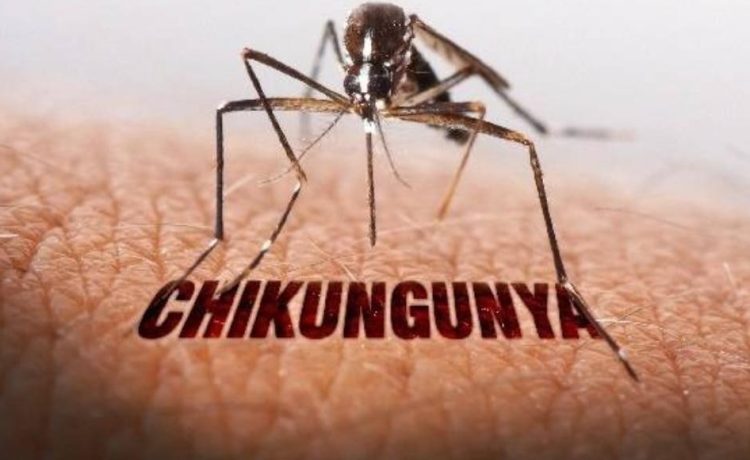Karachi, Pakistan’s largest city, is grappling with an alarming increase in chikungunya cases, posing a significant public health challenge. This mosquito-borne viral disease, transmitted mainly by the Aedes aegypti mosquito, has sparked concerns across the city, with medical professionals and local authorities urging immediate action to curb its spread. As chikungunya symptoms closely resemble those of dengue, another prevalent mosquito-borne illness in the region, effective diagnosis and management have become critical in controlling this outbreak.
Causes of the Chikungunya Outbreak
The surge in chikungunya cases in Karachi can be attributed to several interconnected factors. First and foremost, the city’s tropical climate, coupled with inadequate drainage systems, creates an ideal breeding ground for mosquitoes. The frequent monsoon rains lead to water accumulation in open containers, potholes, and clogged drains, providing a perfect environment for Aedes mosquitoes to thrive.
Additionally, Karachi’s densely populated urban areas, coupled with improper waste management, contribute to the spread of the disease. Stagnant water and piles of garbage in various neighborhoods serve as breeding sites for mosquitoes, increasing the risk of chikungunya transmission. The lack of public awareness about the disease
and preventive measures also exacerbates the situation, as many residents remain uninformed about how to protect themselves and their families.
Another significant factor is the rapid and unplanned urbanization of Karachi, which has led to overcrowded living conditions and insufficient sanitation facilities. The influx of people into the city and the expansion of informal settlements have put immense pressure on existing infrastructure, further complicating efforts to control mosquito-borne diseases.
Symptoms of Chikungunya
Chikungunya presents with a range of symptoms that can be severe and debilitating. The onset of the illness is usually sudden, characterized by high fever, intense joint pain, headaches, muscle pain, fatigue, and skin rashes. The joint pain associated with chikungunya is often excruciating and can persist for weeks or even months, severely impacting a patient’s quality of life and ability to perform daily activities. While chikungunya is rarely fatal, the long-term effects of joint pain can be particularly challenging for older adults and those with preexisting conditions.
In some cases, chikungunya symptoms overlap with those of dengue and Zika, making it difficult to diagnose without proper laboratory testing. As a result, many cases may go unreported or be misdiagnosed, hindering efforts to track the outbreak accurately.
Prevention Measures to Combat Chikungunya

Preventing chikungunya requires a comprehensive approach that involves individual actions, community efforts, and government interventions. Here are some key strategies to help reduce the risk of chikungunya in Karachi:
- Eliminate Breeding Sites: The most effective way to prevent chikungunya is to eliminate mosquito breeding sites. Residents should regularly check their homes and surroundings for any standing water, such as in flower pots, buckets, or discarded tires, and promptly empty them. Covering water storage containers and ensuring proper waste disposal can also help reduce mosquito breeding grounds.
- Use Mosquito Protection: Using mosquito repellents, wearing long-sleeved clothing, and sleeping under mosquito nets are crucial in protecting against mosquito bites. Installing screens on windows and doors can help prevent mosquitoes from entering homes.
- Community Awareness and Engagement: Community-based awareness campaigns are vital in educating the public about chikungunya, its symptoms, and prevention strategies. Local health authorities, NGOs, and community organizations should work together to conduct workshops, distribute
informational materials, and engage residents in cleanup activities to reduce mosquito breeding sites.
- Regular Fumigation Drives: Local government bodies must regularly conduct fumigation drives, especially during and after the monsoon season, to control mosquito populations. These efforts should be targeted at high-risk areas, including slums, markets, and places with poor sanitation.
- Strengthening Healthcare Infrastructure: Karachi’s healthcare infrastructure needs reinforcement to handle the growing number of chikungunya cases. This includes ensuring adequate supplies of diagnostic kits, training healthcare providers on recognizing and managing chikungunya symptoms, and improving reporting systems for better disease surveillance.
Conclusion
The recent spike in chikungunya cases in Karachi is a stark reminder of the city’s vulnerability to mosquito-borne diseases. The combination of climatic conditions, poor waste management, and lack of public awareness has created a perfect storm for the spread of chikungunya. However, with proactive measures, community engagement, and a robust healthcare response, it is possible to mitigate the impact of this outbreak.
By eliminating mosquito breeding sites, using personal protection measures, and promoting public awareness, Karachi can combat this growing health threat effectively. Collaboration between residents, local authorities, and healthcare providers will be
crucial in curbing the chikungunya outbreak and safeguarding the health of Karachi’s citizens. The fight against chikungunya is a collective responsibility, and only through united efforts can the city overcome this challenge.







